Terminal 3 alone can't turn Dhaka into an 'aviation hub'

Recently some images have been circulating of the under-construction third terminal of Hazrat Shahjalal International Airport (HSIA) in Dhaka, which shows what we can expect the interior of the terminal to look like. Most netizens and experts were vastly impressed.
Many believe that the third terminal megaproject will be a game changer for the country's aviation sector. At a recent conference, the prime minister herself expressed her wish to turn Bangladesh into an aviation hub. On the other hand, Biman Bangladesh has reportedly been in discussion with Airbus to purchase new aircraft, admittedly a step in the right direction because only a shiny new terminal will not be enough to transform Bangladesh's aviation sector. Biman, our national flag carrier, must grow, expand, and possibly revamp itself to complement the whole project.
The question remains as to whether Bangladesh can truly be an aviation hub in the region when there are already big players such as Singapore, Bangkok, Hong Kong, and Delhi. The third terminal project does include auxiliary projects such as high-speed taxiways and a large cargo village. But frankly speaking, there are several highly important elements that are still missing. It is quite surprising and disappointing that no one yet has pointed out these missing elements in the megaproject – all of which are so crucial!
The first and most important of these is the need for a new ATC (Air Traffic Control) tower. HSIA currently lacks not only a proper ATC tower, but also the right equipment and technology to control air traffic. A new airport would practically be useless without modern navigation and communication systems. So, one can't fathom why a new ATC tower and radar system have not been included as part of this megaproject. Radio communication between Dhaka's air traffic controllers and pilots is easily listenable online and one can hear how unclear the communication seems to be due to the airport's old and outdated equipment. One could be forgiven for wondering how foreign airlines still fly into the HSIA.
Secondly, there has always been a debate over whether a second parallel runway would be feasible. Every major airport around the world has at least two operational runways. Therefore, it is only fitting that HSIA should also have another runway not only as backup but also to handle increasing passenger and aircraft movement, as the taxiways and the sole current runway get busier. However, the lack of space for a second runway might be an issue here. The authorities have allowed illegal constructions and settlements around the airport's perimeter to such a degree that a significant threat is posed to flight safety while landing or taking off from Dhaka. This is an issue that needs urgent attention from relevant authorities. Once the safety concerns are duly addressed, a second runway would still be possible, with certain adjustments.
Then there is the matter of ground handling and the quality of airport services. As a major gateway to Bangladesh, the HSIA reflects the image of our country. No matter how shiny an airport is, if the passenger experience is still sub-par, our aviation sector can never progress forward. Incompetency, mismanagement, and corruption have plagued passenger experiences and ground handling services for too long at the Dhaka airport. Many are still worried that, despite a new terminal, these unpleasantly familiar scenarios will remain.
Internationally reputable ground handling agencies such as Dnata, Swissport, and Celebi have previously offered to invest in Dhaka's ground handling. But these offers were unfortunately denied due to Biman's monopoly. And we have all witnessed and experienced what good this has done.
But no more. New changes are necessary for the benefit of all and it is time for a more competent entity to take over the day-to-day operation of the HSIA once the third terminal is fully operational.
Finally, branding is a vital tool to market almost anything these days. All major airports across the world have their own logo and branding, but none of the airports in Bangladesh practice any form of branding. This must not be overlooked. After the completion of the third terminal, the HSIA will need to brand itself with at least an appealing logo. And the red neon signs displaying the name of the airport on top of the present terminals just won't do. No other internationally renowned airport has such signs displayed on the facade of the landside terminals given that everyone knows where an airport is located and what it could look like. Bangladesh cannot become an aviation hub overnight, but the completion of the third terminal (along with the additional projects to transform the HSIA into a 21st century airport) could be the first step in that direction. And for that, this roadmap, with all the elements of a modern functioning airport, will be necessary for the Dhaka airport.
Manazir Islam is an urban planner, traveller, and photographer.

 For all latest news, follow The Daily Star's Google News channel.
For all latest news, follow The Daily Star's Google News channel. 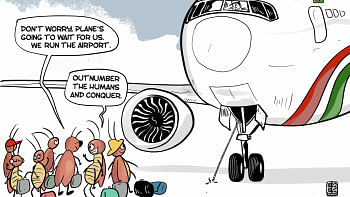
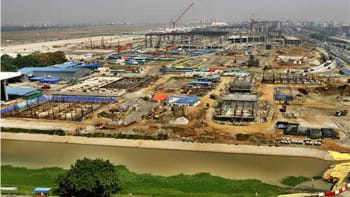



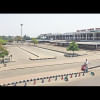


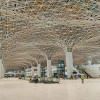
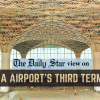


Comments